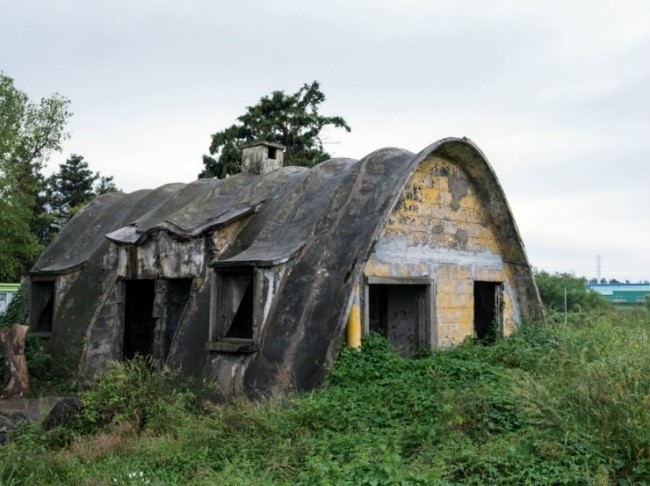| |
 |
|
| ▲ Ctesiphon. This three-sided structure was built by Father McGlinchey in the 1970s and functioned as a pigsty in the early days of the ranch. The roof, made of boards and straw bags, was placed on top of a hut where Japanese soldiers had been stationed. This is where the training for ranch started. (Photo courtesy of The Jeju Weekly) |
St. Isidore Ranch was the first ranch in Jeju.
It started when Father Patrick James McGlinchey, an Irish priest who came to Jeju in April 1954 as a member of the Columban Missionaries, reclaimed the wide barren land in the middle mountainous area in Mt. Hallasan and established a central training ranch in November 1961. The name came from St. Isidore, the Spanish saint who was a tenant farmer.
Toward the end of the Korean War in 1953, seven Columban Missionaries priests who were dispatched in Gangwon-do were executed at gunpoint. Father McGlinchey was one of five priests who came to Korea to replace them. He was 25 when he first came to Korea.
“When I first arrived in Jeju, people called me an ‘American bastard.’ I answered back, ‘I’m an Irish bastard.’ Because the climate in Jeju is similar to Ireland, it made me feel at home when I arrived here. The stone walls, the wind, and the customs are all similar. Back then, all the homes were thatched houses except the schools and post offices. Everyone subsisted on barley, but the women brought eggs and chicken to feed me.”
Swept by the Korean War and the April 3 Incident, Jeju was an island of poverty. However, in the eyes of the priest, despite suffering from destitution, the people of Jeju were honest and eager to educate their children.
As McGlinchey grew up in Ireland, where pasturage was well-developed, he recognized right away that the middle mountainous area in Jeju was perfect for raising cattle. In the early 1960s, despite the dissuasion of those who were doubtful, he reclaimed the tough land and built a ranch to raise pigs, cattle, and sheep.
Because the middle mountainous area was filled with volcanic stone that doesn’t trap water, he dug up a reservoir and collected water by paving the bottom with clay. He then installed a water pipe from a water source 18km away to pull the water. Father could now water the grass and feed it to the animals. Some sighed, “The pastor at Hallim Church is mad, he created a ranch on a barren mountain. He’ll give up soon enough.” But he persisted in cultivating the stone field and sowed the grass seeds.
At the time, Jeju residents were raising the “poop pigs” in their toilet. They only ate the pigs during celebrations and special occasions. They sold the pigs for money when necessary. Lamenting the situation, Father McGlinchey thought they could make money by raising pigs properly. He brought a pregnant Yorkshire pig to Jeju from the mainland. The pig traveled all the way from Incheon to Mokpo by train, then from Mokpo to Jeju by ship.
Raising and distributing those pigs was how St. Isidore Ranch started. He would breed, sell, study, and teach the people of Jeju how to raise the pigs. Although he didn’t mean to operate a farm originally, it ended up becoming a training ranch for the local residents.
To help them provide for themselves, he trained the residents, built sheds, and lent out 20 pigs for free. It was the beginning of Jeju’s pig farming industry. To this day, more than half of Jeju’s pig farms are located in Hallim-eup. This is why Father McGlinchey is dubbed, “the pig priest.”
This is how St. Isidore Ranch, which had an enormous influence on Jeju’s livestock industry, was created.
When Presidents Syngman Rhee and Park Chung-hee failed in their attempts to create ranches, such as Songdang Ranch, they asked: “Why can’t Songdang Ranch do what St. Isidore has done?”
According to Father McGlinchey, the ranch was successful because he “wanted to let people realize that they can use their own resources, because continuous assistance from overseas doesn’t always solve problems.”
Later, the pastor built factories for livestock feed and milk. The profit from the ranch and the factories were used to operate a nursing home and a hospice for free.
Father McGlinchey became an honorary Jeju resident in 1973 and started using the Korean name, “Im Pi-je.” After 64 years of dedicating his life to Jeju, he passed away on April 23, 2018. |




















